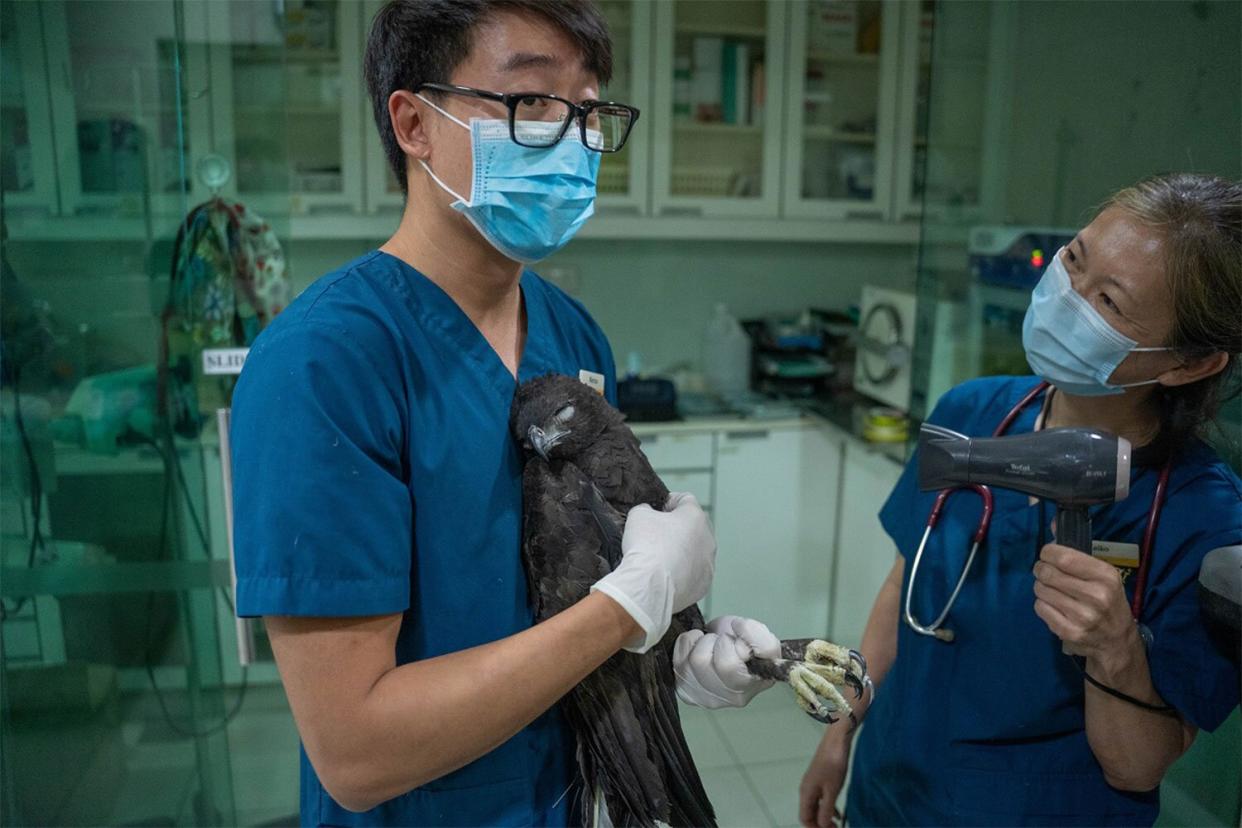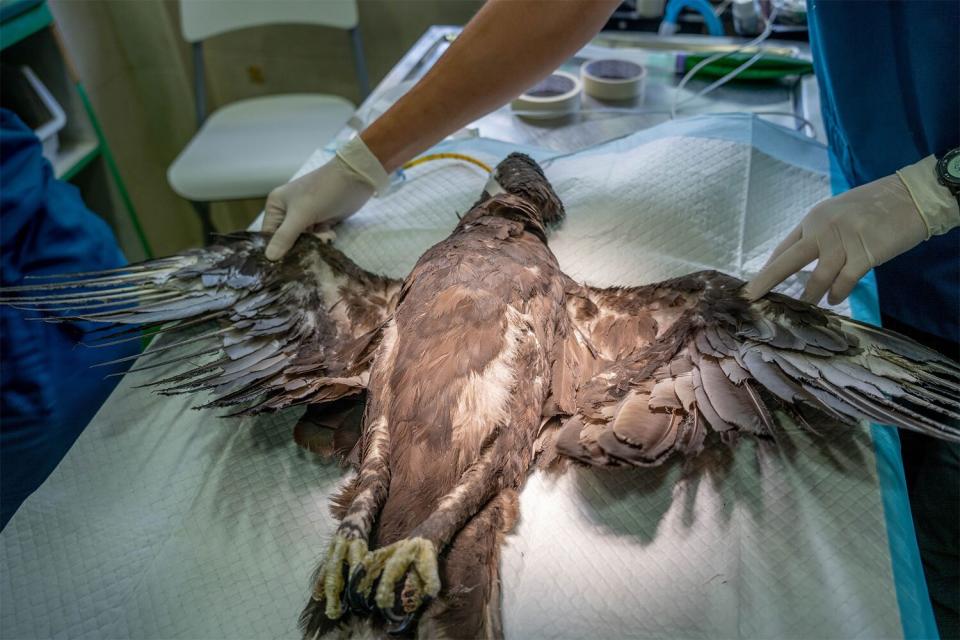Singapore Vet Team Uses Chopsticks to Give Injured Bird 'Feather Implants' and Chance to Fly

Jurong Bird Park Marcus Tan secures the bird in his arms while waiting for it to recover from anesthesia
A changeable hawk-eagle in Singapore recently underwent a remarkable procedure to install "feather implants" into its wings after losing its ability to fly.
The injured bird was brought to Jurong Bird Park's avian hospital on Jan. 8 with burnt feathers on both of its wings and its tail, leaving it incapable of flying, according to a news release from Mandai Wildlife Reserve, which manages the bird park.
"To help speed up the bird's release into the wild, Jurong Bird Park's veterinary team used bamboo chopsticks to reattach over 50 new donor feathers" to the bird, which was otherwise in "good health," according to a video detailing the procedure posted to the Mandai Wildlife Reserve's Facebook page.
An individual on Jurong Island reported the injured bird. The National Parks Board responded to the report, rescued the hawk-eagle, and brought the creature to the bird park for care, per Thursday's news release from Mandai Wildlife Reserve.
RELATED: Bindi and Terri Irwin Say the Australia Zoo Animals Run to See Baby Grace: 'Steve All Over'
On Jan. 20, the bird's damaged feathers "were successfully" replaced. The next day, National Parks released the bird, who used its repaired wings shortly after returning to the wild.
"Each feather had to be meticulously trimmed, measured, and arranged to ensure the aerodynamics of the bird's flight," the Mandai Wildlife Reserve said in their video about the injured hawk-eagle.
Never miss a story — sign up for PEOPLE's free daily newsletter to stay up-to-date on the best of what PEOPLE has to offer, from juicy celebrity news to compelling human interest stories.

Jurong Bird Park Dr Ellen Rasidi tests the fit of one of the donor’s secondary feathers
In the news release, Dr. Ellen Rasidi, a veterinarian at Jurong Bird Park, compared the procedure to humans getting hair extensions. The difference, she said, is the level of care that goes into affixing the feathers to the wing.
RELATED: The World's Oldest Living Aquarium Fish Is a Californian Who Loves Belly Rubs Named Methuselah
"Each feather is shaped differently, and fixing them in incorrect angles may affect the aerodynamics of the bird's flight," said Rasidi. "Feathers are not only essential for a bird to fly but also help regulate their body temperature, act as camouflage and protect them from water."
She added, "Without sufficient feather coverage, this bird would not have been safe to be released into the wild despite its otherwise good health."
Never miss a story — sign up for PEOPLE's free weekly newsletter to get the biggest news of the week delivered to your inbox every Friday.

Jurong Bird Park Jurong Bird Park’s avian hospital
When it's time for birds like the one rescued in Singapore to molt, their new feathers naturally push out the existing implanted feathers. "The process is painless for the bird as feathers are made of keratin, the same material as human hair and nails," the reserve said.
RELATED: World's Oldest Male Gorilla Dies at 61 in Atlanta Zoo: 'This Is a Devastating Loss'
"While birds will naturally grow new feathers through their molting cycle, it could take up to 12 months for the eagle to fully regrow its feathers and be able to fly again," the Mandai Wildlife Reserve noted in their release.
A real-time satellite tracking device, which can relay information about the bird's location to a central database, was attached to the bird's tail before it was released into the wild. As of Wednesday, the hawk-eagle had flown about six miles from its release site.

 Yahoo Movies
Yahoo Movies 
